This drawing shows a "plume" of hot material rising from the interior of a planet.
Plumes
A "mantle plume" is a bubble of material which rises to the surface layers from the deep interior of the planet. The plume is the red portion shown in the drawing to the left. Such plumes are thought to form when a portion of the deep mantle is
heated to several hundred degrees hotter than its surroundings. This portion
of the mantle is now less dense than its surroundings and begins to rise, like a hot air balloon.
As it nears the surface, the plume may take on a mushroom-like shape, as shown here. The plume may push the surface upward, forming a
rise. It also begins to generate magma, some of which escapes to the surface to form volcanoes, lava flows, and rift valleys. Rises like this may be found on Venus and Mars.
Hot plumes which rise from the interior to the surface help a planet to cool off.
You might also be interested in:
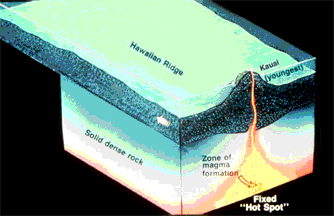
The Hawaiian Islands are an example of the way some volcanoes are made. A rising hot bubble of material finds it's way into the crust of the Earth from the deep interior, and erupts material unto the surface.
...more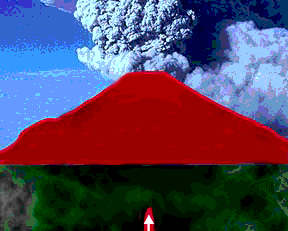
Volcanoes form when hot material from below risesand leaks into the crust. This hot material, called magma, comes either from a melt of subducted crustal material, and which is light and buoyant after
...more
AU stands for Astronomical Units. It is a useful way to measure the distances in interplanetary space. It is the distance between the Earth and the Sun, which is about 93 million miles. For reference,
...more
The solar wind is formed as the Sun's top layer blows off into space, carrying magnetic fields still attached to the Sun. Gusts form in the solar wind associated with violent events on the Sun. Particles
...more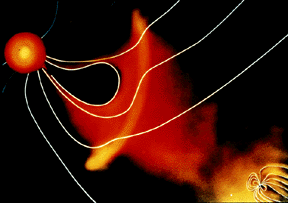
For a planet to be affected by a blob of material being ejected by the sun, the planet must be in the path of the blob, as shown in this picture. The Earth and its magnetosphere are shown in the bottom
...more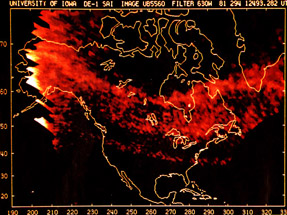
The aurora we are most familiar with is the polar aurora. This is what people are talking about when they say the northern or southern lights. But there are other less-known aurora, such as SAR arcs.
...more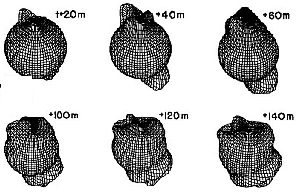
This figure shows the effect of the aurora on the atmosphere. When FAC's enter the atmosphere and create the aurora, they heat the atmosphere suddenly and abruptly. This creates an impulse which travels
...more















